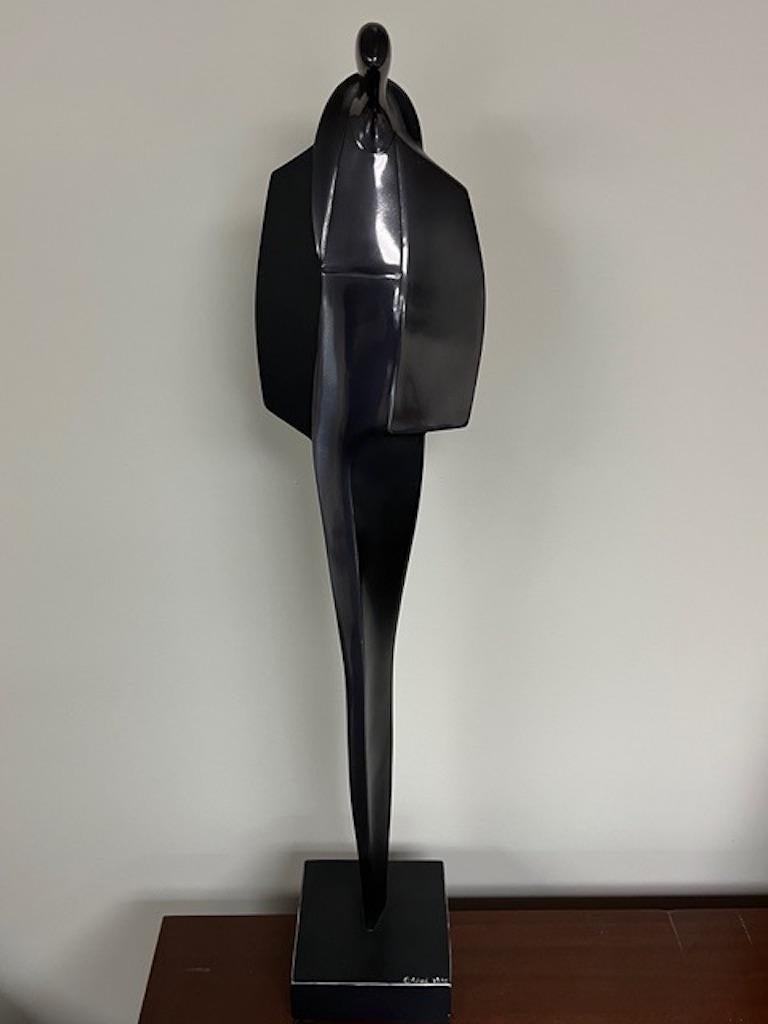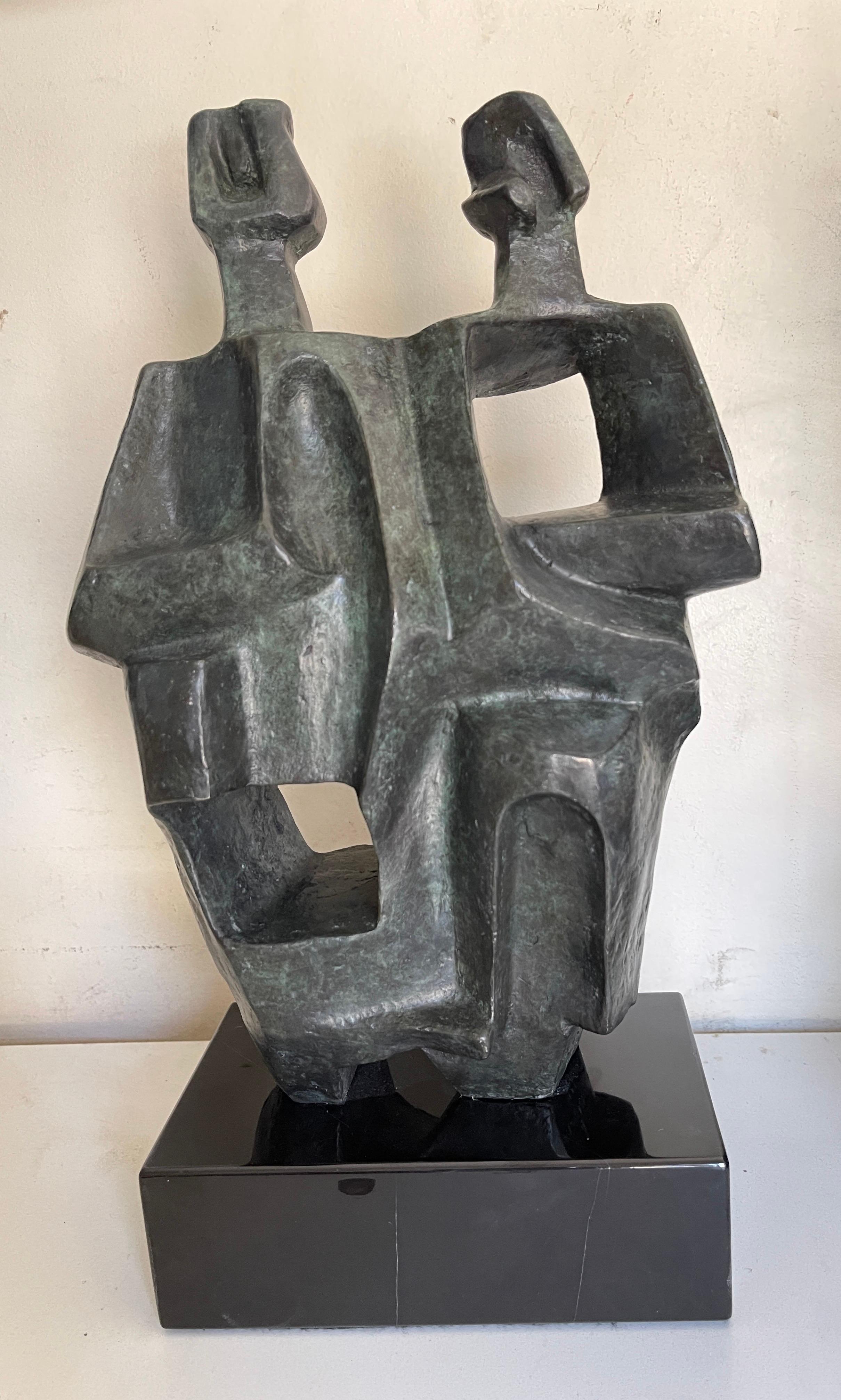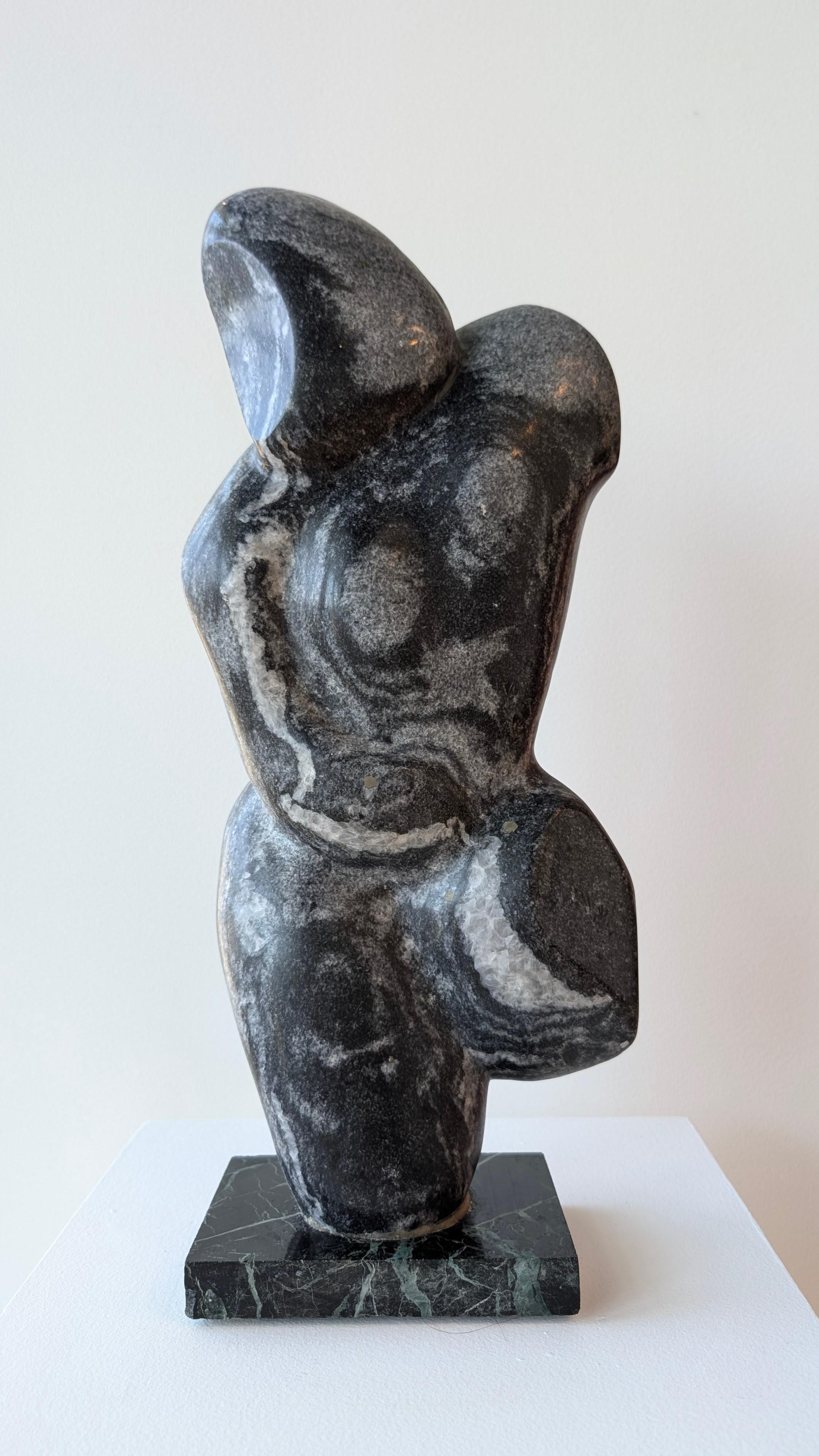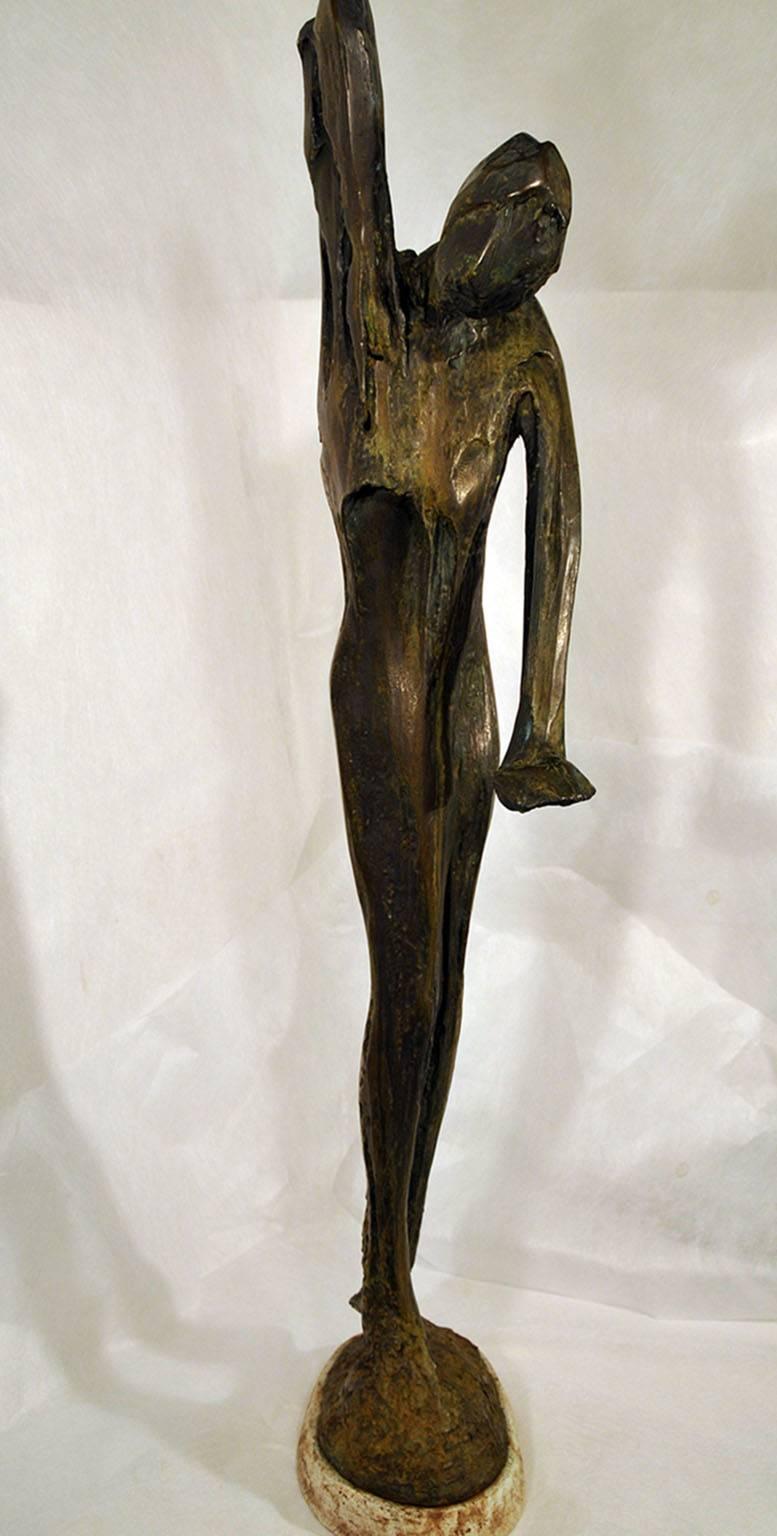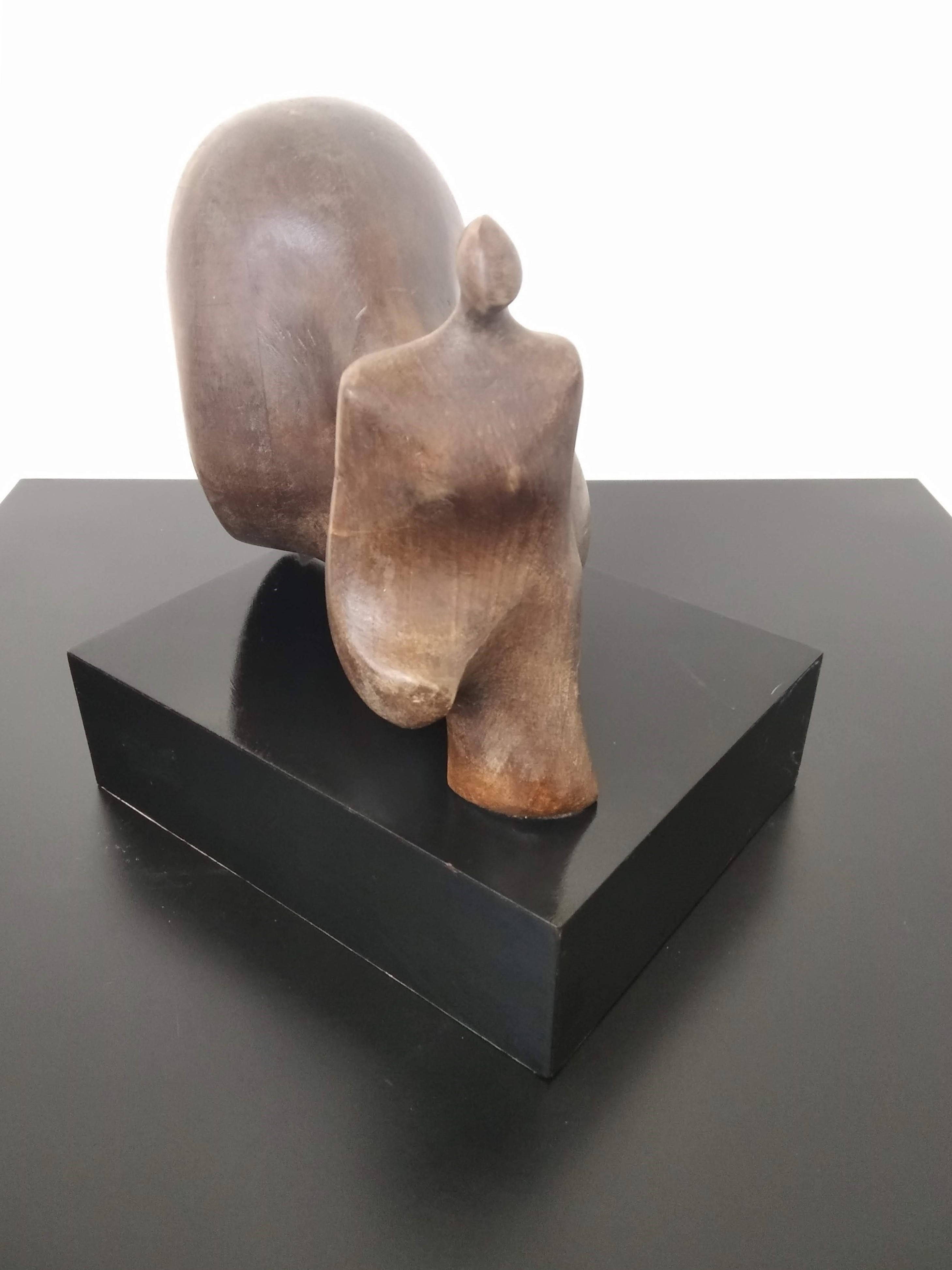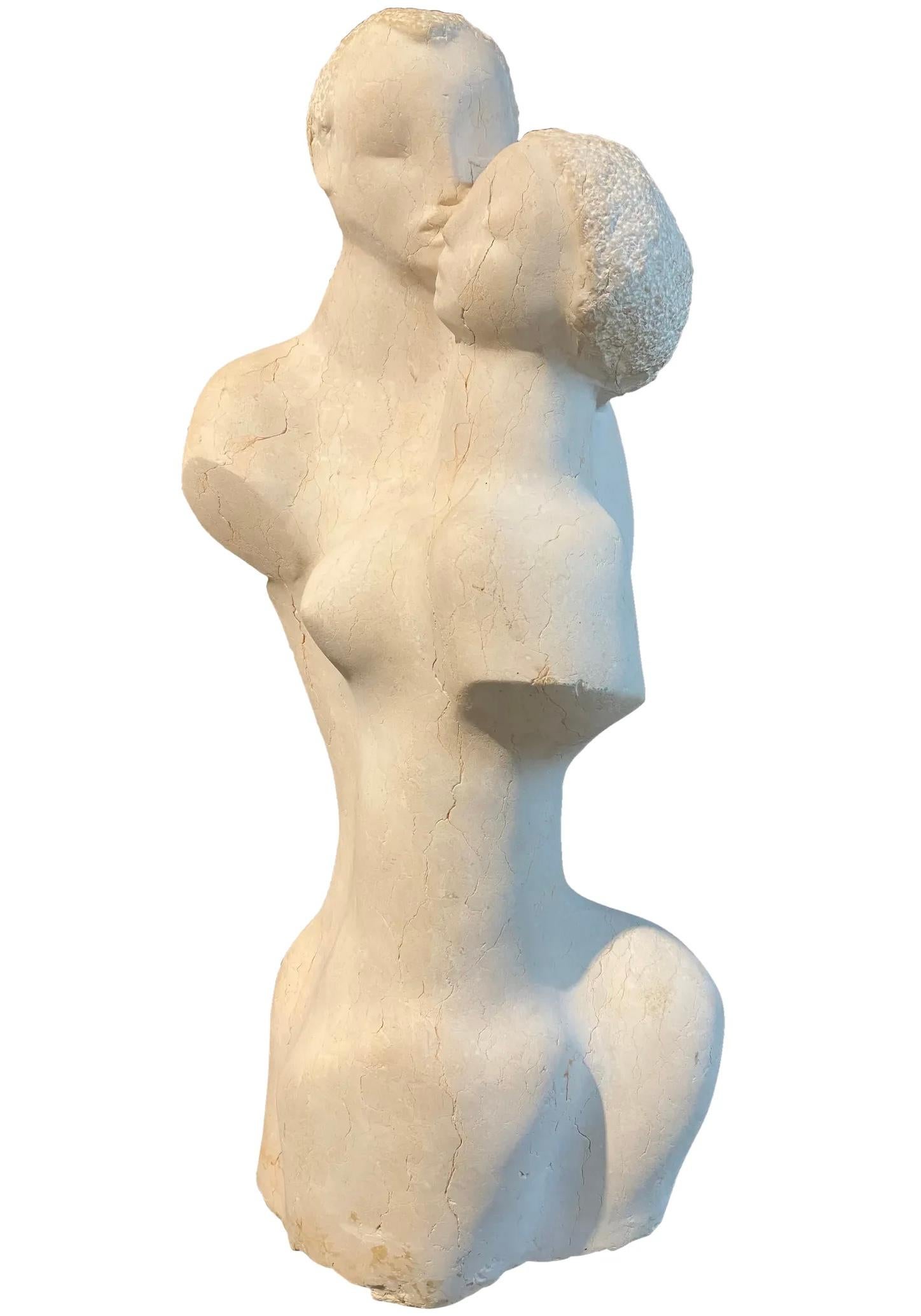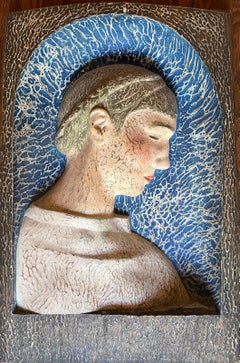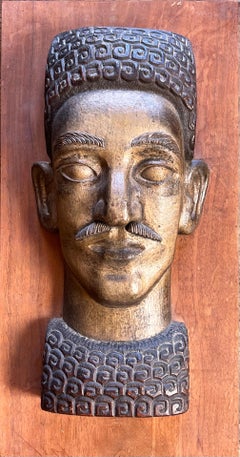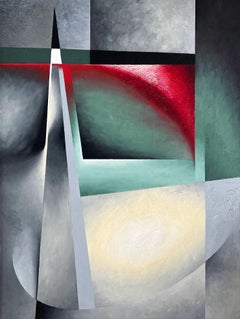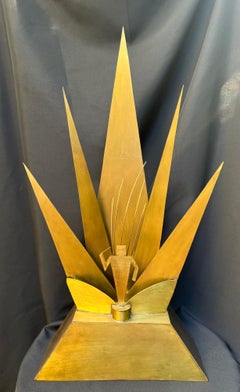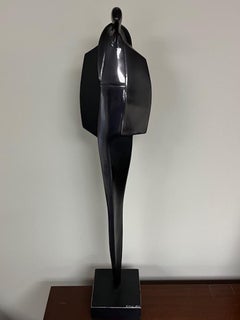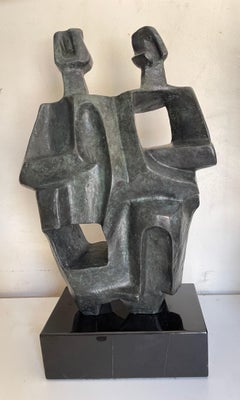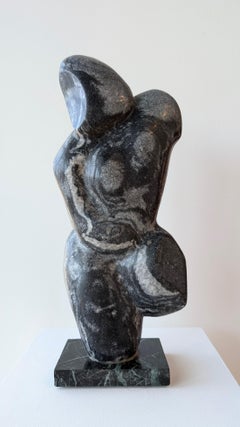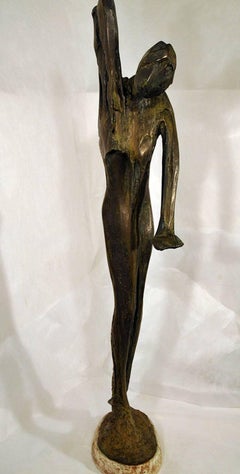Want more images or videos?
Request additional images or videos from the seller
1 of 2
Robert Chester ThomasTwo Figures1949
1949
$5,500
£4,199.70
€4,781.50
CA$7,722.87
A$8,442.61
CHF 4,466.52
MX$101,029.36
NOK 56,830.04
SEK 52,022.15
DKK 35,714.88
About the Item
This sculpture is part of our exhibition America Coast to Coast: Artists of the 1940s.
Two Figures, 1949, ebony wood, 24 x 7 x 5 inches, unsigned, but comes from Thomas' daughters and includes a copy of a 1949 photo of this work listing the artist's name, title of work and date
Robert Chester Thomas was a California sculptor. A native of Wichita, Kansas, Thomas moved with his family to Southern California as a child. During World War II, he joined the army and served for a time in the European theater. When he returned to California, he studied sculpture with David Green in Pasadena in 1946 and 1947, before taking advantage of the GI Bill in 1948 to study with Ossip Zadkine in Paris. He first exhibited at Galerie St. Placide as part of an exhibition of American artists working in late 1940s Paris, as well as at the International Salon de Mai in 1949. Thomas likely sculpted Two Figures while still in Paris studying with Kadkine. The direct carved ebony wood, cubist angles, dark patination, interlocking forms, negative space and ovoid heads all owe a debt to Thomas' teacher.
Thomas returned to the US and earned his BA at the University of California Santa Barbara in 1951 and his MFA from the California College of Arts and Crafts in 1952. He taught there for a year before returning to Santa Barbara to join the University of California Santa Barbara faculty in 1954 where taught until his death in 1987. A 1956 Santa Barbara News Press article described Thomas' teaching methods: "His beginning students are given a series of formalized problems to familiarize them with three dimensional shapes. Later in the course they work from the figure by drawing and modeling. Advanced sculpture students are required to complete four to eight major projects of their choosing in various sculptural media. Los Angeles Times art critic Henry Seldis, in a letter supporting Thomas' professorship, noted "I am glad to note that rather than impose his own artistic visions and techniques on those he teaches, he makes it possible for them to arrive at a convincing idiom of their own." Thomas had a meaningful impact beyond his students. Sculptor Marc di Suvero credited his decision to become a sculptor to Thomas.
From the 1940s through 1960 Thomas worked in a variety of media, including marble, wood, terracotta, greenstone, bronze, iron, firebrick and welded steel before dedicating his practice primarily to cast bronze in the 1960s. He later worked in glazed and unglazed clay, making a series of small reliefs. In an introduction to a retrospective of Thomas' work, Henry Seldis noted: "Because of his strong urge to explore every avenue of his art and craft, [he] presents us with many well-mastered techniques of sculpture but with varied creative concepts that give [his work] a vigorous diversity without making it in any way eclectic."
Thomas exhibited widely during his long career, including at the San Francisco Museum of Art, the Santa Barbara Museum of Art, the Los Angeles Municipal Art Exhibitions, the La Joya Art Center, and the California State Fair. He also showed at a number of commercial galleries, including Esther Robles Gallery (Los Angeles), the Esther Bear Gallery (Santa Barbara), the Adele Bednarz Galleries (Los Angeles), the Meredith Niles Gallery (Santa Barbara), the Bradley Galleries (Santa Barbara), and Delphine Gallery (Santa Barbara). He is listed in Who Was Who in American Art and other standard references.
- Creator:Robert Chester Thomas (1924 - 1987, American)
- Creation Year:1949
- Dimensions:Height: 24 in (60.96 cm)Width: 7 in (17.78 cm)Depth: 5 in (12.7 cm)
- Medium:
- Movement & Style:
- Period:
- Condition:
- Gallery Location:Los Angeles, CA
- Reference Number:1stDibs: LU1859214281142
About the Seller
5.0
Gold Seller
Premium sellers maintaining a 4.3+ rating and 24-hour response times
1stDibs seller since 2022
17 sales on 1stDibs
- ShippingRetrieving quote...Shipping from: Los Angeles, CA
- Return Policy
More From This Seller
View AllUntitled (Hulda Goeller)
Located in Los Angeles, CA
This sculpture is part of our exhibition Charles Goeller: A Wistful Loneliness.
Carved and painted wood and gesso, 23 x 15 3/4 x 3 inches, Signed verso "Carved by Charles L. Goeller...
Category
1930s American Modern Figurative Sculptures
Materials
Gesso, Wood
Kossack
Located in Los Angeles, CA
This sculpture is part of our exhibition America Coast to Coast: Artists of the 1930s
Kossack, c. late 1930s, polychromed cedar and walnut relief sculpture, carved signature under the base of the figure, 15 x 8 x 3 1/2 inches (figure), 10 x 19 inches (board), exhibited at Zeidler's solo exhibition at the San Francisco Museum of Art, November - December, 1942 (label verso), label verso reads "Kossack / cedar & walnut / Avis Zeidler"
About the Sculpture
Kossack is typical of Aviz Zeidler’s direct carved wood sculptures of the 1930s. The subject looks directly at the viewer, unfeeling behind a polychromed stare. Seemingly influenced by two of her major teachers, California’s Ralph Stackpole and New York’s William Zorach, Zeidler drew on primitive traditions to create what one critic described as her “gruesome wood sculptures.” Rigid, solid, and unmoving are other words that characterize Zeidler’s statues which often seem to have the deeply rooted ancient power of a totem. Zeidler’s “grimacing artificiality does, indeed, manage to hold a sense of force,” is how The San Francisco Examiner art critic put it in 1938 when describing the artist’s award-winning entry at the San Francisco Art Museum. The same words could have applied to Kossack when it was exhibited at the museum four years later. Perhaps the artist was trying to contain the power of the fearsome Kossacks, the enemy of so many Eastern European peasants, by freezing the image in wood.
About the Artist
Avis Zeidler (Nemkoff) was a California-based artist who is principally known for her sculpture and drawings. She was born in Madison, Wisconsin, but moved to Northern California by the late 1920s where she majored in art at Berkely and studied with Lucien Labaudt, Ray Boynton...
Category
1940s American Modern Figurative Sculptures
Materials
Wood
Abstract
Located in Los Angeles, CA
This painting is part of our exhibition Charles Goeller: A Wistful Loneliness.
Oil on canvas, 29 x 22 inches, Signed on frame verso “Painted by Charles L. Goeller”
Exhibited:
(Perh...
Category
1930s American Modern Abstract Paintings
Materials
Oil
Music (attributed)
By Philip Kran Paval
Located in Los Angeles, CA
This sculpture is part of our exhibition America Coast to Coast: Artists of the 1930s
Music (attributed), brass and wire construction, c. 1936, 28 x 14 x 5 inches; perhaps exhibited at Hollywood Riviera Gallery, 1936 (third prize); provenance includes Estate of Jon Spencer Helfen (Los Angeles, CA
About the Sculpture
In 1935, Philip Paval bought a box of metal in a “blind auction.” Paval, a painter, sculptor, and jeweler, had hoped the box contained silver. To his dismay, it was brass. Seeing an opportunity, Paval started to make sculptures from the brass sheets. His subjects included Cinema, Hollywood, Radio, Dance, Aviation and Music. The works were well-received with the Hollywood crowd and critically acclaimed. Actor and comedian, Ben Bard, purchased four of them for his theater, and novelist and screenwriter, Vicki Baum ordered four more for her drawing room. Movie director King Vidor also purchased them. Los Angeles Times art critic, Arthur Millier, described Paval’s “contraptions” as “ingenious, decorative, different.” Paval exhibited these works for several years in the late 1930s, including at the American Artists’ Congress Gallery in Los Angeles in an exhibition called Formalism and Abstraction in 1938 and at a solo show at Stendahl Galleries in 1939. The appeal of these works must have been irresistible, as a 1936 Los Angeles Times article noted, “Two feet of brass art has been stolen from the Hollywood Riviera Galleries. The work is an abstraction. It portrays the spirit of music and rested on the grand piano in the main hall. The work of Philip Paval, it won third prize in the current gallery exhibition at the gallery.” One can only wonder whether this is the “contraption” which was pilfered from the gallery nearly one hundred years ago. Given the description of the work, its subject matter and size, it seems likely.
About the Artist
Philip Paval was a sculptor, painter, and jeweler. Born in Denmark, Paval was apprenticed to a silversmith and studied art in Denmark. He immigrated to the US in 1919 and first worked as a merchant seaman in New York. The following year, Paval settled in Los Angeles where he later opened his own jewelry shop featuring works he designed and produced. Paval became a favorite in the entertainment world, making a good living selling silver...
Category
1930s Art Deco Figurative Sculptures
Materials
Brass
Portrait (Untitled)
Located in Los Angeles, CA
Portrait (Untitled), c. mid 1930s, hammered copper, 11 1/2 x 8 1/2 inches
Beryl McCarthy Wynnyk was a California-based painter, sculptor, and craftsperson. She studied at the Califo...
Category
1930s American Modern More Art
Materials
Copper
On a Spanish Motif
Located in Los Angeles, CA
On a Spanish Motif, 1956 – 1973, mixed media collage and painting on thick canvas, signed and dated lower right, 38 ½ x 26 inches, signed verso, labeled verso includes title, artist's name, address and size of work, presented in its original strip frame
Justin Faivre...
Category
1950s Abstract Mixed Media
Materials
Metal
You May Also Like
Untitled (Figure)
By Curtis Jeré
Located in New York, NY
Curtis Jere Untitled (Figure)
Sculpture and base are metal, base appears to be aluminum
Signed and dated as shown in photograph
Curtis Jeré was the shared pseudonym of two artists,...
Category
1990s Modern Sculptures
Materials
Metal
Cubist Couple
By Charna Rickey
Located in Los Angeles, CA
CHARNA RICKEY
"THE COUPLE"
BRONZE, SIGNED
AMERICAN, DATED 1976,
14.5 INCHES OVERALL
Recent casting
Category
1870s Cubist Figurative Sculptures
Materials
Bronze
Untitled
Located in Vancouver, CA
Ben McLeod (b. 1948, Aberdeen, Scotland) is a preeminent Canadian sculptor whose over five-decade practice is characterized by a profoundly self-propelled trajectory and the cultivat...
Category
1990s Abstract Figurative Sculptures
Materials
Marble
$3,900
Up
By Robert Cook
Located in New York, NY
Bronze, 1967. Height 59" (149.9 cm) width max 15" (38 cm).
Signed on base "R Cook." This unique large sculpture was made using the lost wax process.
“ ...
Category
Mid-20th Century American Modern Figurative Sculptures
Materials
Stone, Bronze
$35,000
Untitled
By Josep Maria Codina Corona
Located in Barcelona, BARCELONA
Includes a Certificate of Authenticity
Category
1970s Modern Abstract Sculptures
Materials
Wood
Lovers
By William Zorach
Located in Milford, NH
A fine abstract marble sculpture of two lovers, unsigned, in the manner of Lithuanian American artist William Zorach (1887-1966). Zorach was born in Eurberg, Lithuania, was brought t...
Category
Mid-20th Century Abstract Figurative Sculptures
Materials
Marble
More Ways To Browse
Unglazed Clay
Robert Thomas
Wood Sculpture Robert
Carved Marble Figure Of Child
Outdoor White Sculpture
Philip Stone
Picasso Poisson
Pitcher Ceramic Abstract
Rabbit Woman
Red Tall Sculpture
Saggar Fired
Sculptured Human Heads
Tangle Sculpture
Wire Head Sculpture
30inch Sculpture
Bearbrick Basquiat 1000
Betsy Brown Art
Bronze Sculpture Whales
